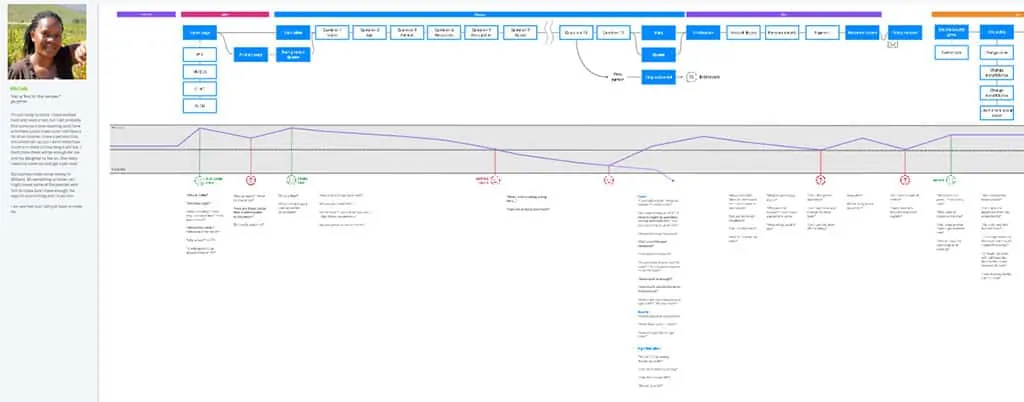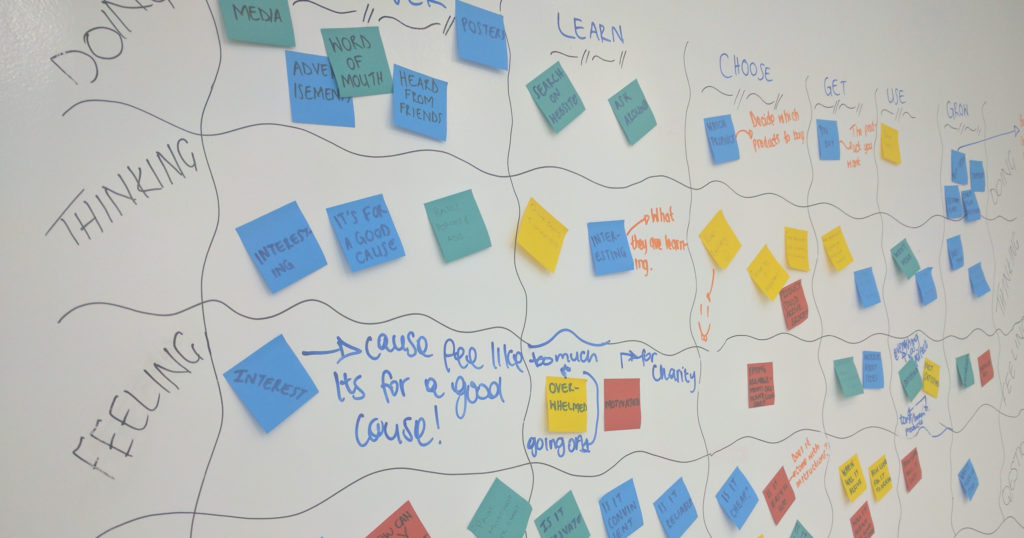Every time a customer interacts with your company, you have the opportunity to further mutual respect and trust. By focussing on getting the business end right, many companies often forget to check in with the very people they aim to please, overlooking customer experiences – good and bad. It’s these nuanced interactions between people and organisations which ultimately determine the success of a product, website or app. One way to document these experiences is by mapping out your customer’s journey from beginning to end.

The main objective of a journey map is to help your team learn more about your customers. It does this by documenting their thoughts, desires, motivations, and frustrations at each touchpoint with your company, in a chronological and easy-to-read way.
Too often, companies fail to bring in the customer’s perspective, choosing instead to focus on the business’s process. At How Might We, we make getting to know your customers a priority through customer research, interviews and usability testing. We then bring these insights into the journey mapping process.
Making journey maps useful
Journey mapping has an unlimited scope, so it’s easy to get side-tracked. For them to be truly useful we first need to understand what they are trying to achieve. They are not final deliverable, they are a stepping stone to identifying and prioritising what to do next. Whether you’re looking to identify pain points in your current experience, plan the new ideal experience or map what motivational techniques are needed to get a customer through a complex process, our lean journey maps will help you take action in the right direction without wasting time on complicated specification documents.
As-Is journey maps help to identify your customer’s current experience. Focusing on what works (delighters) and what doesn’t (points of pain). From this, we are able to prioritise what areas need to be fixed and what effect it will have on the whole experience.
An ideal journey map is the starting point for a new experience. Looking at the holistic customer experience, across channels, silos and product lines we are able to design every aspect of the customer journey, while not being boxed into one area of the business. A good experience makes a customer feel that every part of the business knows what every other part is doing.
A service design blueprint is an ideal customer journey map with added detail about how that experience will be implemented. It highlights what people and processes the business needs to have in place to make that experience possible. The blueprint is divided into two sections, the ‘front of house’, is what the customer experiences and the ‘back of house’, is what needs to be in place behind the scene to execute on that ideal experience.

Co-creating a journey map in a workshop after research.

A final journey map.